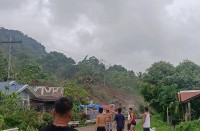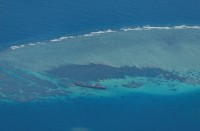(Eagle News) — The Philippine military is adding more elite troops for what they called the “final push” in Marawi City to rid this southern Philippine city of Islamic militants.
The siege in Marawi City by Islamic State-linked Maute group has killed 819 people, mostly rebels, since the battle started on May 23.
Major General Carlito Galvez Jr., the Western Mindanao Command chief, said that the government forces may take another three weeks for this final third phase of the fight in Marawi.
He said that they are preparing for the bloody final assault.
There had been continuous air and ground assaults in the area still occupied by the Maute terrorists.
“Yes we are now in the final push. We have already transitioned from the first phase to the second phase, that’s why we are preparing already on the possible return of our IDPs (internally displaced people) a few weeks from now,” Galvez said.
“So we are on the third part, in our parlance, but it does not mean it will be over in one, two or days, so the final push it might take three weeks or one month since we have to pace it,” he added.
The military has missed repeated targets and deadlines to crush the rebels in Marawi, a largely Muslim town on the southern island of Mindanao, raising questions about whether it can contain a wider rebellion.
The government has so far killed around 600 Islamist militants since the Marawi attack by the Maute group on May 23.
More than 130 soldiers and policemen, and 45 civilians had so far been killed in this war between government and ISIS-inspired militants that had been going on for more than three months already.
Col, Romeo Brawner Jr., the deputy commander of Joint Task Group Ranao, explained how this was all a “slow process,” one where government troops are usually placed in vulnerable positions.
“It was a slow process because the members of the Maute (the Islamic state-linked militant group) terrorist group positioned themselves in very strategic areas,” Brawner said.
“They had snipers positioned such that our troops who were passing through the bridge were cornered or were sort of sitting ducks, so it was a slow process. If you can see we had to drop bombs in the area to drive away the snipers of the terrorist group.”
Military officers noted that this fight was harder as it was a “close battle” where the enemy forces were just in adjacent buildings.
“This is a harder fight and this is the first time I experienced such a close battle, we’re just fighting in adjacent buildings,” noted one soldier.
(Based on a report of Sophia Okut, Eagle News Service, with a report from Reuters)







